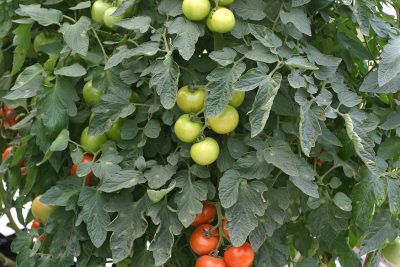Five Steps to Food Safe Fruit and Vegetable Home Gardening
Follow the five simple steps listed here and reduce the risk of someone suffering a foodborne illness after eating produce from your home garden.
STEP 1 - Prepare the Garden for Planting
- Locate vegetable gardens away from manure piles, well caps, garbage cans, septic systems and areas where wildlife, farm animals, or the family pets roam.
- Use compost safely. Compost is the natural breakdown product of leaves, stems, manures and other organic materials-and also a source of pathogens. To be safe for gardening, your compost must reach a temperature of at least 130°F. Check the temperature with a compost thermometer. Do not use any animal waste, including pet waste, meat scraps or dairy product waste into your compost bin.
STEP 2 - Maintain the Garden
Water source: Be familiar with the quality and safety of the water source(s) you use in your garden.
- If you get your water from a municipal or public water system, you can be sure that it is safe and potable (drinkable).
- Surface water (lakes, ponds, rivers and streams) can be polluted by human sewage or animal waste, fertilizers and pesticides from lawns and farm fields, or chemicals from industry.
- Ground water (which is the source for well water) is less likely to have microbial contaminants than surface water. If a well is your water source, you need to take a little more care to be sure that it is providing you with safe, clean water.
- Conduct a standard water test at least once a year to determine if your well water meets the standards of the Environmental Protection Agency (EPA).
Animals: Animal waste can be a source of bacteria, parasites and viruses.
- During the gardening season, keep cats, dogs and other pets out of the garden.
- Curtail nesting and hiding places for rats and mice by minimizing vegetation at the edges of your fruit and vegetable garden.
- Do not feed wild animals, even birds, near your garden. Fencing or noise deterrents may help discourages other wild animals.
STEP 3 - Harvest Garden Produce
- Use clean, food-grade containers. Food-grade containers are made from materials designed specifically to safely hold food. Garbage bags, trash cans, and any containers that originally held chemicals such as household cleaners or pesticides are not food-grade.
- Use clean gloves (that have not been used to stir compost or pull weeds) or clean hands when picking produce.
- Brush, shake or rub off any excess garden soil or debris before bringing produce into the kitchen.
STEP 4 - Store Garden Produce
- If you choose to wash fruits and vegetables before storing, be sure to dry them thoroughly with a clean paper towel. (NEVER wash berries until you are ready to eat them.)
- If you choose to store without washing, shake, rub or brush off any garden dirt with a paper towel or soft brush while still outside. Store unwashed produce in plastic bags or containers.
- Keep fruit and vegetable bins clean.
- When washing produce fresh from the warm outdoors, the rinse water should not be more than 10 degrees colder than the produce. If you are washing refrigerated produce, use cold water.
- Fruits and vegetables needing refrigeration can be stored at 40° F or less.
- Fruits and vegetables stored at room temperature (onions, potatoes, tomatoes) should be in a cool, dry, pest-free, well-ventilated area separate from household chemicals.
STEP 5 - Preparing and Serving Fresh Garden Produce
More often than not, we eat fresh fruit and vegetables raw, so we cannot rely on the heat of cooking to destroy pathogens that might be on our lettuce or tomatoes. It is important to prepare raw produce with food safety in mind.
- Always wash your hands first.
- Rinse fresh fruits and vegetables under cool, running, clean water even if you do not plan to eat the skin or rind.
- Never use soap, detergent, or bleach solution to wash fresh fruits or vegetables. These solutions can affect flavor and may not be safe to ingest.
- Avoid cross-contamination when preparing fruits and vegetables. Cross-contamination occurs when a clean work surface such as a cutting board or utensil (paring knife) or uncontaminated food, is contaminated by dirty work surfaces, utensils, hands or food. Be sure to wash your hands (as well as the knife and cutting surface) before preparing any ready-to-eat foods such as salad, fresh fruit or a sandwich.
- If you have leftover produce that has been cut, sliced, or cooked, store it in clean, air-tight containers in the refrigerator at 40°F or less.
 Produced as a project of the Universities of Rhode Island, Connecticut, Maine, New Hampshire and Vermont and funded by CSREES/USDA. Project 2003-5111001713
Produced as a project of the Universities of Rhode Island, Connecticut, Maine, New Hampshire and Vermont and funded by CSREES/USDA. Project 2003-5111001713